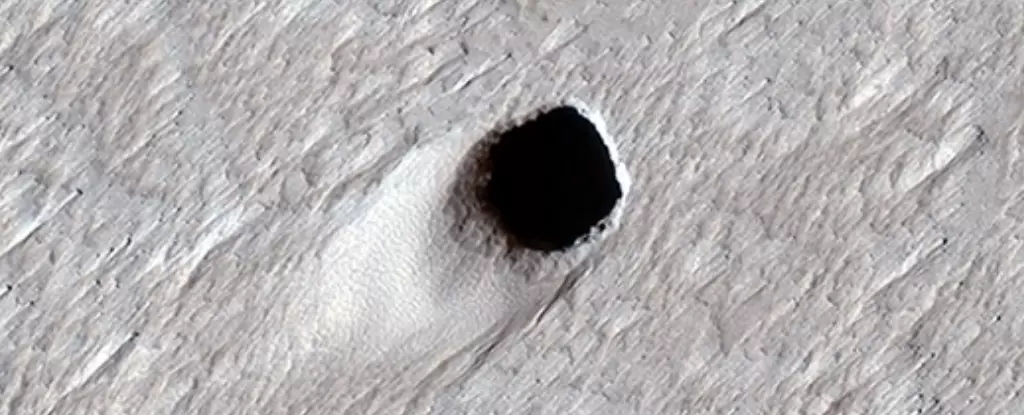Mars, our neighboring planet, has always been a subject of fascination for scientists and space enthusiasts alike. One of the most intriguing features on Mars is the presence of holes or pits, particularly on the flanks of ancient volcanoes in the Tharsis region. These holes, also known as pits, have captured the attention of researchers due to their mysterious nature and potential significance for future scientific endeavors.
According to Brandon Johnson, a geophysicist at Purdue University, these holes could be the result of collapsed ground above underground lava tubes, similar to skylights on Earth. These skylights could serve as shelters for astronauts during future missions to Mars, providing protection from radiation. However, the depth and extent of these holes remain uncertain, leaving room for speculation and further exploration.
Apart from their possible use as shelter for astronauts, these holes hold another exciting possibility – the search for extraterrestrial life on Mars. The warm and protective environment offered by these pits could harbor life forms, similar to lava tubes on the moon. While it is unclear whether the temperatures inside the Martian lava tubes could sustain life, the idea remains a promising avenue for research.
Ross Beyer, a planetary scientist with the SETI Institute, emphasized the importance of exploring these holes in depth to uncover any evidence of extraterrestrial life. The limited information gathered from orbiting cameras highlights the need for physical exploration of these pits. Sending a rover to investigate the underground structures could provide valuable insights into the potential habitability of these mysterious holes.
Despite the allure of exploring these holes on Mars, significant challenges lie ahead for researchers and space agencies. The limitations of orbiting cameras, such as the HiRISE camera onboard NASA’s Mars Reconnaissance Orbiter spacecraft, present obstacles in obtaining detailed views of the pits’ interiors. As Ross Beyer pointed out, there is a need for more comprehensive exploration to unravel the mysteries concealed within these holes.
Proposed missions involving robots or rovers descending into the skylights could offer a solution to the challenge of exploring the pits’ depths. By physically entering the underground structures, scientists could gather vital data and potentially discover new insights into Mars’ geological history and potential for sustaining life. However, the complexities of such missions underscore the importance of meticulous planning and execution to ensure their success.
Concluding Thoughts
The holes on Mars represent a tantalizing frontier for scientific exploration and discovery. From their origins on ancient volcanoes to their potential as shelters for astronauts and habitats for extraterrestrial life, these pits hold a wealth of possibilities for future missions. By combining technological innovation with scientific curiosity, researchers hope to unlock the secrets hidden beneath the surface of the red planet. As we continue to peer into the depths of Mars’ mysterious holes, the quest for understanding our neighboring planet’s enigmatic landscapes remains an ongoing endeavor.


Leave a Reply